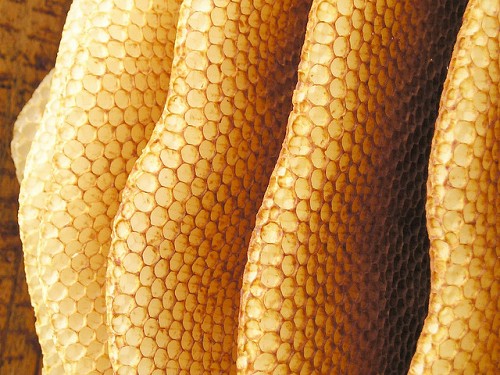Which Beehive Is Best?
 We love bees! These spunky little insects serve a great dual purpose in the garden. For one thing, they're pollinators, ensuring that your fruits, veggies, flowers, and more get the pollen they need to succeed in your landscaping. For another, they produce delicious honey, with flavors that will change through the seasons depending on what they're eating. (And, as a bonus, some people think eating local honey can mitigate seasonal allergies, although science disagrees.)
We love bees! These spunky little insects serve a great dual purpose in the garden. For one thing, they're pollinators, ensuring that your fruits, veggies, flowers, and more get the pollen they need to succeed in your landscaping. For another, they produce delicious honey, with flavors that will change through the seasons depending on what they're eating. (And, as a bonus, some people think eating local honey can mitigate seasonal allergies, although science disagrees.)
If you're interested in keeping bees, you've probably found yourself suddenly aswarm (sorry) in the midst of a bunch of new terms, concepts, and equipment. You might be second-guessing yourself. This beekeeping thing sounds hard, plus, you really don't want to get stung!
Don't panic. For one thing, people have been keeping bees for a very long time, and that means there's a wealthy of knowledge at your fingertips to help you raise successful, happy, healthy bees. Furthermore, beekeepers are often wildly enthusiastic about their profession or hobby, and they love sharing information with people who are just getting started. You might want to consider joining a local beekeeping group to access potential mentors.
Today, though, we're going to take a look at a pretty basic but surprisingly tricky question. What kind of beehive should you get? If you didn't know there were different types, don't worry -- neither did other beekeepers before they started out!
Langstroth Hive
When you think managed bee hives, this is probably what you imagine: a box or stack of boxes. Each box contains a number of frames prefilled with a wax foundation for the bees to use, and the box/frame setup is called a "super." This design produces a lot of honey, but there are some definite drawbacks, including the weight of the supers (when they're full, you may need two people to handle them) and the fact that you don't know what the wax foundation contains.
On the other hand, this design is also standardized. That makes it a cinch to replace or borrow components, and you don't have to get all crafty when you just want to focus on beekeeping. Furthermore, because the bees aren't working on wax production, they can make you more delicious honey without using up their reserves, a major win if you love honey, or if you're trying to produce it on a commercial scale.
Top-Bar Hive
This beehive design looks a lot like a manger with a series of bars strung across the top. These serve as anchors for the bees to build up their honeycomb, and a roof across the hive protects them. You can make a top-bar hive at very low cost, hire a handyman to help out, or buy versions ranging from the baroque to the basic (some even have plastic sides so you can watch your bees inside, which is pretty amazing!). It can be a great starter hive, too.
Here's the cool part about a top-bar hive: it doesn't use the so-called super design seen in the Langstroth. You can lift out a single bar at a time to check on the bees and harvest the honey. That might not seem like a big deal now, but it means that a single person can manage the hive without busting a muscle lifting the super. That's one reason some disabled beekeepers like the top-bar design so much, as it's easy to manipulate even if you don't have a lot of upper body strength or you need to manage your hives from a wheelchair.
In addition, all the wax inside this hive is made by your own bees. You know exactly what's in it, and that's important if you're seeking specialty certification, you want to use the wax in cosmetics, or you just like to be assured that your beeswax is, well, your beeswax.
The downside of this design is that it necessitates more frequent inspection (good thing bees tend to be docile and relaxed in top-bar hives!) and it doesn't produce as much honey.
Warre Hive
It's like like the hybrid of beehives. The Warre has some elements of both Langstroth and top-bar, with a design that's very similar to a bee's natural environment: the inside of a tree. It includes super-like body boxes made with top bars, but it doesn't require frequent maintenance, and bees tend to settle in well and regulate themselves very happily in a Warre hive.
Unlike a Langstroth, the bees build their own comb in the Warre, and hive boxes are usually added at the bottom, not the top. This again mimics natural bee behavior, as bees tend to prefer to build down rather than up. The design, if you're curious, was developed by a Frenchman, Abbé Émile Warré, who experimented with a vast number of hive designs in search of the perfect bee environment.
You might find some advice from an experienced beekeeper helpful when it comes to your ultimate choice (and we haven't even arrived at the discussion about which bees to put inside!) but we hope this guide helps demystify some of the arcane argot of beekeeping!
Katie Marks writes for Networx.com.
Updated May 31, 2018.
Looking for a Pro? Call us (866) 441-6648

Landscaping Average Costs
Landscapers Experiences

“Stealth” Tree Trimming Was An Incredibly Clean Job

Landscaping Turns A Weed Patch Into A Great Little Zen Garden




